Laser Treatment For Acne Scars: Effect, Types, & How It Works
Understanding the different treatment options can help you make an informed choice.
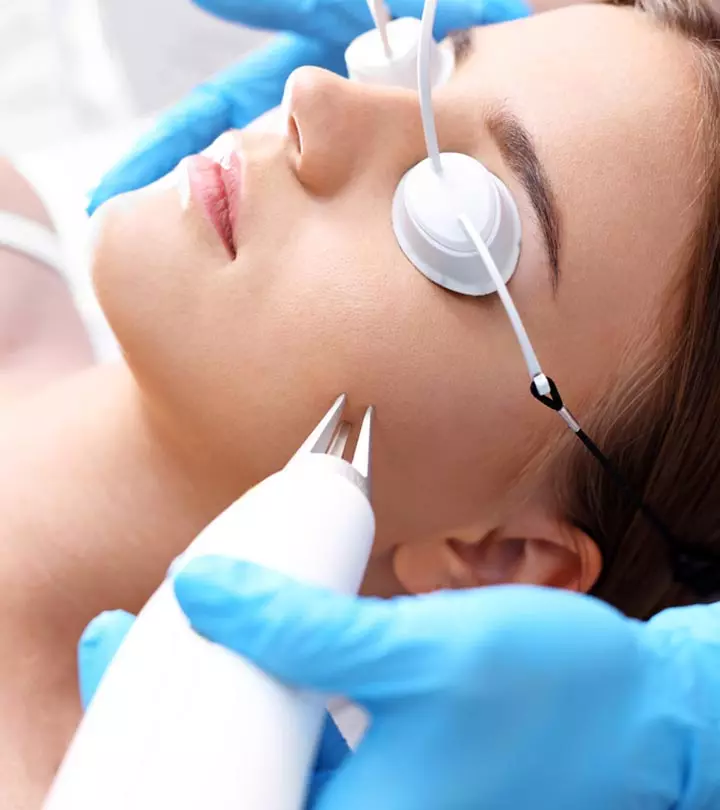
Image: Shutterstock
Getting rid of acne scars is tough. However, you can fade them with topical treatments or non-invasive dermatology procedures. Laser treatments for acne scars are considered one of the best solutions for deep scars. They are usually performed by doctors and can minimize the appearance of old scars. Laser skin resurfacing treatment breaks down the scar tissue and promotes new cell growth. However, you must consult a dermatologist to understand if it is the right option for you. Scroll down to learn more about laser treatments for acne scars.

In This Article
Understanding Acne And Acne Scars: How Are They Formed?

Acne occurs when the dead skin cells and sebum, along with bacteria, accumulate in your skin pores, causing inflammation and lesions. Your body has a mechanism to fix this damage. It repairs the damage by forming more collagen. This ends up changing your skin texture by forming indentations or raised areas (hypertrophic or keloidal scars) on your skin (due to the excess collagen formation), resulting in a scar.
In other words, you can get acne scars when your skin starts to heal. Understanding the different types of acne scars will guide you in choosing the best laser or natural treatments for smoother skin. Depending on how much excess collagen your skin has formed or lost, acne scars can be classified into three types:
- Atrophic Scars
These types of scars are formed when there is tissue loss during the acne recovery process. This causes depression in your skin. Icepick scars (deep scars), rolling scars (usually M-shaped), and boxcar scars (U-shaped scars with a wide base) are the three types of commonly seen atrophic scars (1). Identifying the types of atrophic acne scars is key to selecting the right treatment, as different scars respond to different methods.
In a cross-sectional study of 723 participants with atrophic acne scars, the respondents reported having mild (31.6%), moderate (40.6%), and severe (18.8%) scars. The study attempted to understand the psychosocial impact of acne scars in adults. 25.7% of the participants said they felt unattractive, 27.5% were embarrassed or self-conscious, 8.3% reported having been verbally or physically abused because of the scarring, and 15.9% experienced facing negligence or dismissal at work.
- Hypertrophic and Keloidal Scars
You get these types of scars when your skin forms too much collagen, causing bumps and ridge-like areas on the surface. There are bundles of collagen within the area where there is acne. Hypertrophic scars are raised scars that occur on the site of injury (or acne). These are thick and wide and usually occur during the healing process.
On the other hand, keloids appear as red-purple papules that can spread beyond the acne-affected area. Both hypertrophic and keloidal scars are common in dark-skinned individuals and mostly appear on the trunk (1).
Key Takeaways
- Laser resurfacing treatments disrupt skin tissues to boost new cell growth. They target specific areas, improve skin texture, and are a better option than surgeries.
- Ablative lasers can remove acne scars by melting the damaged layer of skin. But it has a longer recovery time and may cause infections.
- Non-ablative lasers are safer, as they boost collagen production and improve the appearance of acne scars.
- It is normal to experience some swelling and redness in the treated areas. Keep the areas clean and avoid sun exposure.
Laser Treatment For Acne: How Does It Work?
Lasers are intense monochromatic lights that are limited within a narrow band of wavelengths. These monochromatic lights are used on your skin to stimulate the dermal fibroblasts (cells in your skin that can form connective tissues and facilitate wound healing). These fibroblasts remodel the collagen and elastin that were lost due to scarring (2).
Usually, ablative and non-ablative lasers are used for acne scar treatment. Treating old scars with laser treatments can significantly improve their texture and appearance. However, knowing the prevention tips can help you limit the occurrence. You can find out more in the next section.
Types Of Laser Treatment For Acne Scar Removal
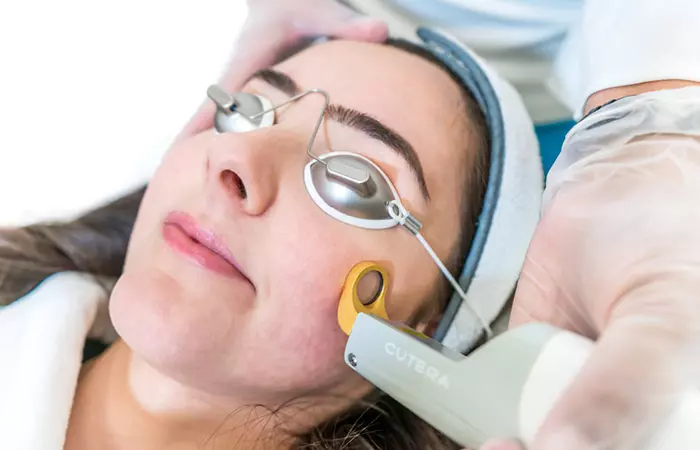
Lasers that are used for acne scar removal mainly fall into two categories:
- Ablative Lasers: These lasers can improve acne scars effectively and offer impressive results. They remove the damaged tissue by vaporization or melting it. The most commonly used ablative lasers are Erbium YAG and Carbon dioxide (CO2) lasers. These erode the scar surface and tighten the collagen fibers under your skin. Ablative lasers have a longer recovery time (1).
- Non-Ablative Lasers: Non-ablative lasers have a shorter recovery time, but the results are less impressive as compared to ablative lasers. These lasers do not remove any tissue from your skin but boost collagen development and make your skin tight. The most common non-ablative lasers used for acne scar treatment are the diode and NdYAG lasers (1).
Here is a detailed overview of the types of laser treatments used for acne scar removal:
1. Intense Pulsed Light (IPL)
Intense Pulsed Light works on the principle of selective thermal damage in the target area. These devices emit polychromatic, noncoherent, high-intensity pulsed light that has a broad wavelength spectrum. This combination of wavelengths, pulse durations, and pulse intervals assists in treating a wide range of skin conditions (3).
Intense Pulsed Light (IPL) is widely used for treating rosaceai An inflammatory condition that causes redness and small red pus-filled bumps on the skin. , telangiectasiasi A condition causing visible widened or broken blood vessels near the skin surface. , sun damage, and pigmentation (face, hands, and chest) (3).
A study published in the Osong Public Health and Research Perspectives found that IPL was very effective in treating hypertrophic scars and keloid scars. The study compared both cryotherapyi A procedure that uses cold temperatures to freeze or destroy abnormal tissue and lesions. and IPL for acne scar treatment. Both showed promising results in treating acne scars, but IPL had lesser complications (4).
2. Fractional Laser Treatment For Acne Scars
Fractional CO2 laser resurfacing uses a variety of microbeam sizes and densities to suit the needs of the patient. The fractional CO2 system can be used easily on other parts of the body (other than the face). This treatment can help eliminate existing acne scars and also prevent new scar formation (5). It is mainly used for treating sun damage, wrinkles and fine lines, pigmentation, and photoagingi Premature aging signs caused by excessive exposure to UV rays. -related issues.
3. Erbium: Yttrium Aluminum Garnet (Er: YAG) Treatment F-or Acne Scars
The Erbium laser treatment method uses infrared rays of wavelength 2940 nm that penetrate the skin, causing tissue ablation (removal). However, compared to the other types of laser therapy, the tissue vaporization and desiccation (extreme drying of tissues) is lesser in this process. The collagen in your skin absorbs the laser and supports the healing and regeneration process within the skin layers (6).
4. V-Beam Laser or Pulsed Dye Laser (PDL)
Pulsed-Dye Laser (PDL) is the go-to for improving scar-associated erythema. In a study conducted at the Seoul National University College of Medicine, 20 patients with acne erythema were treated with PDL (two sessions of 595 nm laser), and it was found that 90% of the patients experienced clinical improvement in their condition (7).
Another small study found that pulse-dye lasers also improved the depressed appearance of acne scars. It was also found to be effective in enhancing atrophic, icepick, and deep boxcar scars. PDL should be used cautiously on people with dark skin as its blistering can lead to post-inflammatory hyperpigmentation or hypopigmentation (2).
5. Smoothbeam Laser Treatment For Acne Scarring
This process involves using a low-energy 1450 nm-diode (non-ablative) laser for treating acne scarring. It uses a dynamic cooling device that deep cools the target area of your skin using short blasts of cryogen spray. This protects the topmost layer of your skin, the epidermis.
This is quickly followed by another laser beam that targets the upper dermis. The heat generated from the second laser boosts collagen development in the deeper layers of your skin, improving the appearance of acne scars.
According to a study, treatment involving Smoothbeam laser and 30% trichloroacetic acid peels can cause a noticeable improvement in post-acne scarring (8).
However, another study concluded that this treatment method needs to be refined and standardized further to minimize side effects. This study involved 30 subjects who had post-acne scars. They were treated for 18 months (including follow-up sessions until six months post-treatment). Only 53.3% of the cases showed satisfactory results, and about 66.7% experienced post-inflammatory hyperpigmentation (9).
6. PRP And Microneedling For Acne Scars
During a session of microneedling, the dermatologist uses a special device to prick your skin to boost collagen development. That is why microneedling is also known as Collagen Induction Therapy. The results of microneedling therapy depend on its depth. A depth of 2 mm is needed to see any visible improvements. However, this can be painful.
Sometimes, during the session, the dermatologist may also use PRP or platelet-rich plasma PRP injections. This, of course, involves an additional cost. When combined, both the procedures were effective in treating rolling and boxcar scars. However, they were not very effective on ice pick scars.
A study involving 30 patients found that about 23 of them experienced an improvement in scarring by one or two grades, while 5 experienced excellent results (10).
In another study involving 37 patients, researchers found that 36 patients showed remarkable improvement in atrophic scarring after undergoing microneedling (11).
7. eMatrix Sublative Rejuvenation For Acne Scars
This procedure gently resurfaces your skin and improves the skin texture by reducing acne scarring and wrinkles. This process uses radiofrequency (RF) therapy (or electrical pulses) to smoothen your skin. Each pulse delivered to the skin activates the fibroblasts in the target area, which then signal collagen regeneration in the area. The untreated tissues in the adjoining parts support the healing process.
8. Profractional Laser Treatment for Acne Scars
This laser is an Erbium: YAG laser that treats fractions of your skin by creating numerous microchannels within your skin tissues that boost collagen development and smoothen acne scars. The laser not only improves the scars but also tightens the skin, minimizes wrinkles, improves texture, and reduces photodamage.
9. Fraxel Laser Treatment For Scars
The Fraxel laser treatment is a non-invasive procedure targeting acne scars. This treatment stimulates collagen production and removes damaged skin using fractional laser technology. The laser creates micro-injuries, promoting the body’s natural healing process, resulting in smoother, rejuvenated skin. This method selectively treats specific areas, minimizing downtime compared to traditional lasers. This treatment improves skin texture, reduces pigmentation irregularities, and diminishes the appearance of acne scars. Multiple sessions may be required for optimal results, with minimal discomfort and a short recovery period. Also, it is a popular choice for those seeking effective, minimal risk solutions to address the lingering effects of acne.
Cherry, a blogger, shared her journey with laser treatment for acne, writing, “I always had oily and acne-prone skin, but it wasn’t that bad (i).” After a failed attempt with a BHA & AHA skincare line, she turned to Q-Switch lasers to reduce acne scars. Amy described the pain of the treatment as initially challenging but found it to be significantly reduced after subsequent sessions. She noted the treatment’s speed and effectiveness, adding, “I could see the effect after a few sessions.” Despite not achieving 100% clear skin, Amy anticipated an ‘80%++ recovery’ from the process.
 Did You Know?
Did You Know?Laser resurfacing treatments are non-invasive and usually ensure positive results. However, there are risks involved in these treatments. Before considering undergoing laser treatment, you need to be aware of its pros and cons.
Laser Resurfacing Treatments For Acne: Benefits And Risks
Benefits
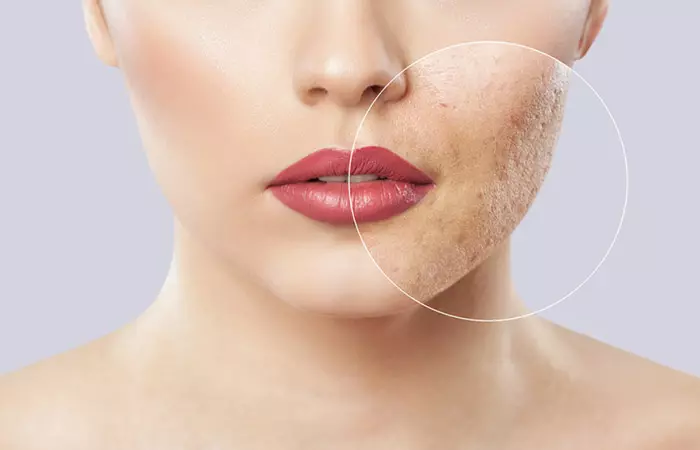
- Laser treatments allow for treating a targeted area on your face.
- They are very effective. You can see a dramatic skin texture improvement and get long-lasting results, depending on the choice of treatment.
- They are better than undergoing surgeries and other skin procedures. Compared to surgery, laser therapy involves lesser tissue damage and has a shorter recovery time.
Risks And Possible Side Effects
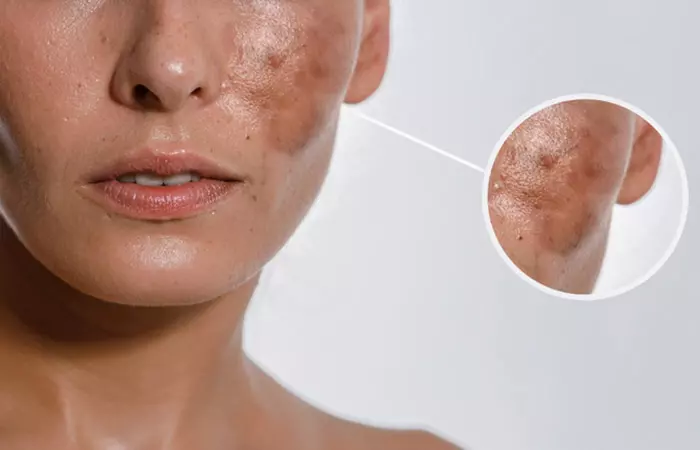
- Usually, ablative lasers have some complications and side effects, including short-term effects like fungal and bacterial infections, and long-term effects like hyperpigmentation and persistent erythema.
- Overtreatment of a particular area with CO2 laser therapy can cause scarring.
- Overtreatment of any area might also cause infection. However, improper after-care is also a major reason for infections. That is why patients should be cautious about their post-treatment skincare regimen.
- You may also experience swelling, redness, discoloration, crusting, and pain in the treated area. If you notice any of these side effects, consult your doctor immediately.
- Your skin will look irritated and red during the recovery time. Though the laser does not burn or peel your skin like chemical peels, the exposed new layers of your skin will remain sensitive to the environment and chemical or natural elements. For those with a darker skin tone, the skin might appear discolored (lighter or darker than your normal skin tone). You can use a cool compress or gel for redness reduction recommended by a dermatologist. You need to adhere to the dermatologist’s guidelines to limit your pain and facilitate the recovery process.
- The availability of treatment is an issue. Also, it is pretty difficult to find a skin rejuvenation center that offers a wide range of laser treatment services (depending on the location).
There are certain things you need to consider before jumping on the laser treatment bandwagon.
Things To Consider Before Going For Laser Treatment For Acne Scars
1. The Cost Of The Procedure
It is expensive. Although the cost varies from place to place, it can be anywhere between $200 to $3,400, depending on the scars and duration of treatment or number of sessions.
2. It Does Not Get Rid Of The Scars
Surprised? Apparently, it looks like your scars are gone for good. But the truth is, the laser treatment does not make them vanish entirely. Instead, it makes them less noticeable.
3. The Outcomes Depend On The Skills Of The Person Performing The Procedure
If the person performing the laser treatment is not skilled enough, you may not get the desired results. Hence, before booking an appointment, ensure that a certified dermatologist is performing the procedure. The treatment outcome also depends on your body’s ability for collagen production and how diligent you are in following the post-treatment skincare routine.
4. Always Go For A Consultation
This is because the dermatologist who will be performing the treatment must consider your skin type, your health, and the condition of your scars. They also need to know your medical history and/or any supplements and medications you are on.
5. The Treatment of May Involve Multiple Treatments
Sometimes, for best results, the dermatologist may combine two or more treatments for scar reduction. For instance, the dermatologists may use a laser for scar treatment and also suggest using fillers. Also, you may require more than one session.
6. Results May Take Time
It can be weeks or months before you see any actual results on your skin. It depends on your skin and the degree of scars you have.
If you have made up your mind to go for laser treatment for acne scars, you need to prepare beforehand for that. Here’s what you need to do.
Preparing For Laser Skin Resurfacing For Acne Scars

1. Limit Your Sun Exposure
This is applicable both before and after the treatment. The dermatologist cannot perform laser treatment if you have a tan as it might cause serious discoloration. After laser treatment, you need to limit your sun exposure to prevent further issues, such as hyperpigmentation or hypopigmentation.
2. Lifestyle Changes
For best results, you may need to make a few changes to your lifestyle, such as:
- Quit smoking before the treatment. You may have to discontinue a few medications and supplements (otherwise, they might delay the healing process).
- Stop using skincare products containing glycolic acid and retinoids at least 2-4 weeks before treatment. Avoid using any medication that may cause photosensitivityi Heightened skin sensitivity or unusual skin reaction when exposed to UV radiations from the sun or any light source. .
- Avoid tanning.
- If you have a history of herpes in the treatment area, inform your doctor because you may need to take certain medications before the procedure.
After the procedure, recovery may take time. Here are a few things that you can expect during the recovery phase.
What To Expect After Undergoing Laser Resurfacing Treatment For Acne Scars
- You may experience swelling, which is normal. Your doctor may prescribe medication to reduce swelling.
- Keep the treated area clean. You need to clean it several times a day and apply ointments for wound care. Your doctor will guide you in this regard and also prescribe medications.
- You may feel an itching or stinging sensation in the treated area. It may continue for 12-72 hours after the procedure. Your skin may even peel and become dry.
- Healing usually takes 10-21 days, depending on the type of treatment, the area of treatment, and the way it heals. Once it heals completely, you can get back to your usual skincare or makeup routine.
- Avoid going outdoors to reduce sun exposure. Your skin may be very sensitive after the procedure. If you have to head out, use sun protection gear like hats, scarves, and sunscreen (recommended by the doctor).
You need to stay in touch with your doctor during the healing phase. If you notice any changes in your skin, talk to the doctor.
 Did You Know?
Did You Know?Consult your dermatologist beforehand to determine whether you are eligible for laser resurfacing treatment or not. Undoubtedly, this is the fastest way to deal with acne scarring. However, you should also be aware of the complications it may cause. Evaluate all aspects of the procedure before you decide to go through with it.
Additionally, approach laser resurfacing with realistic expectations. While the treatment is effective in improving acne scars, it may not completely erase them. The degree of improvement varies for each individual, depending on factors like skin type, the depth and severity of the scars, and the body’s natural healing response. Most patients may require several sessions to achieve their desired results.
Having said that, laser treatment is still one of the most efficient ways to reduce the appearance of acne scars. It is generally safe for most individuals. However, those with dark skin should avoid specific types of lasers due to the possibility of them causing hyperpigmentation. Your dermatologist will explore a variety of lasers while determining the optimal treatment plan for you.
While laser treatment cannot remove acne scars completely, it can significantly reduce the visibility of deep or hyperpigmented scars and the discomfort associated with elevated scars. If acne scars have made you feel self-conscious about your looks, laser treatment could be a simple and effective way to reduce their visibility and boost your self-esteem. If you want a natural solution, you may also check out home remedies for acne scars, such as orange peel powder and tea tree oil, which can help you effectively get rid of acne-free, soothing skin.
Frequently Asked Questions
Who is eligible for laser resurfacing treatment?
People who have acne marks (or any other type of scar), wrinkles, pigmentation, age spots, and superficial acne are eligible for the treatment.
Can acne recur even after undergoing laser treatment? Are the results permanent?
It depends on how well you follow the post-treatment care guidelines. You need to work with your dermatologist and devise a lifestyle plan to prevent acne. Moreover, people with mild acne may get different results as compared to people with severe scarring.
What is the recovery time for laser treatment?
It depends on the type of laser treatment you are undergoing and the kind of scars you have. Recovery may vary from a few days to weeks. For instance, for those with mild scars, the recovery time maybe a few days, while for those with severe scars, it can take weeks, as it increases skin sensitivity.
Is laser treatment painful?
It may hurt or may not hurt (depends on factors, such as the area and depth of treatment and the patient’s ability to bear pain).
Is laser treatment for acne scars safe for all skin types?
Laser treatment for acne scars are safe for all skin types if done by a board-certified dermatologist.
Can I combine laser treatment for acne scars with other treatments?
You can have a laser treatment for acne scars alongside some other related treatments like microneedling (12).
Can laser treatment for acne scars cause any changes in skin color or texture?
After laser treatment, the treated portion of the skin may get darker than it did before. People with dark brown or black skin are more likely to experience permanent changes in their skin tone (13).
Are there any pre-treatment or post-treatment precautions I should take before undergoing laser treatment for acne scars?
Before receiving laser therapy, give up smoking for at least two weeks (14). Stop using aspirin, vitamin E, and other drugs and supplements that can slow the healing process (15).
Can laser treatment for acne scars cause any harm to my eyes?
Lasers are effective facial cosmetic treatment modalities, but they can cause eye injury when they are used circumorbital. or on the eyelids (16).
What should I do if I have an adverse reaction to laser treatment for acne scars?
After laser hair removal, you might experience redness and swelling for the first few hours. Apply ice to the affected area to alleviate any discomfort.
Illustration: Laser Treatment For Acne Scars: Effect, Types, & How It Works
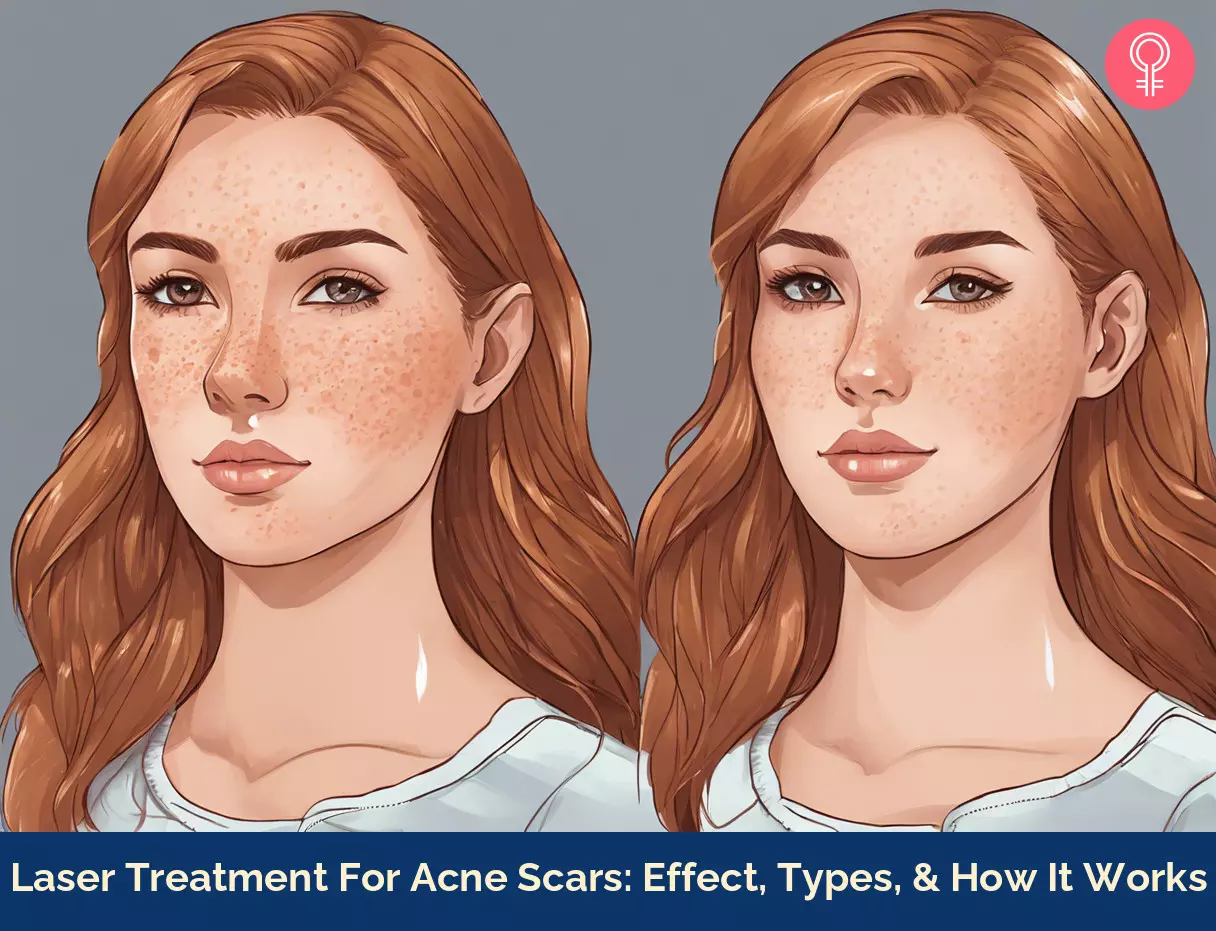
Image: Stable Diffusion/StyleCraze Design Team
References
Articles on StyleCraze are backed by verified information from peer-reviewed and academic research papers, reputed organizations, research institutions, and medical associations to ensure accuracy and relevance. Read our editorial policy to learn more.
- Acne Scars: Pathogenesis, Classification and Treatment, Dermatology Research and Practice, US National Library of Medicine, National Institutes of Health.
https://www.ncbi.nlm.nih.gov/pmc/articles/PMC2958495/ - Acne Scarring—Pathogenesis, Evaluation, and Treatment Options, The Journal of Clinical and Aesthetic Dermatology, US National Library of Medicine, National Institutes of Health.
https://www.ncbi.nlm.nih.gov/pmc/articles/PMC5749614/ - Unconventional Use of Intense Pulsed Light, BioMed Research International, US National Library of Medicine, National Institutes of Health.
https://www.ncbi.nlm.nih.gov/pmc/articles/PMC4167959/ - Comparing Two Methods of Cryotherapy and Intense Pulsed Light with Triamcinolone Injection in the Treatment of Keloid and Hypertrophic Scars: A Clinical Trial, Osong Public Health and Research Perspectives, ScienceDirect.
https://www.sciencedirect.com/science/article/pii/S2210909916300728#bib1 - The Role of the CO2 Laser and Fractional CO2 Laser in Dermatology, Laser Therapy, US National Library of Medicine, National Institutes of Health.
https://www.ncbi.nlm.nih.gov/pmc/articles/PMC3999431/ - Treatment of Acne Scars Using Fractional Erbium:YAG Laser, American Journal of Dermatology and Venereology.
http://article.sapub.org/pdf/10.5923.j.ajdv.20140302.04.pdf - Acne erythema improvement by long-pulsed 595-nm pulsed-dye laser treatment: a pilot study, The Journal of Dermatological Treatment, US National Library of Medicine, National Institutes of Health.
https://pubmed.ncbi.nlm.nih.gov/18273723/ - Evaluation of Acne Scar Treatment With a 1450-nm Midinfrared Laser and 30% Trichloroacetic Acid Peels, JAMA Facial Plastic Surgery, JAMA Network.
https://jamanetwork.com/journals/jamafacialplasticsurgery/fullarticle/480448 - Non-ablative Diode Laser for The Treatment of Post Acne Scars, Egyptian Dermatology Online Journal, SemanticScholar.
https://www.semanticscholar.org/paper/Non-ablative-Diode-Laser-for-The-Treatment-of-Post-Rasheed/f67b8307c315d6a43fdb5d93d2515078496d7d86?p2df - Split Face Comparative Study of Microneedling with PRP Versus Microneedling with Vitamin C in Treating Atrophic Post Acne Scars, Journal of Cutaneous and Aesthetic Surgery, US National Library of Medicine, National Institutes of Health.
https://www.ncbi.nlm.nih.gov/pmc/articles/PMC4338464/ - Microneedling Therapy in Atrophic Facial Scars: An Objective Assessment, Journal of Cutaneous and Aesthetic Surgery, US National Library of Medicine, National Institutes of Health.
https://www.ncbi.nlm.nih.gov/pmc/articles/PMC2840919/
Read full bio of Patrick
Read full bio of Ramona Sinha
Read full bio of Eshna Das
Read full bio of Krati Darak






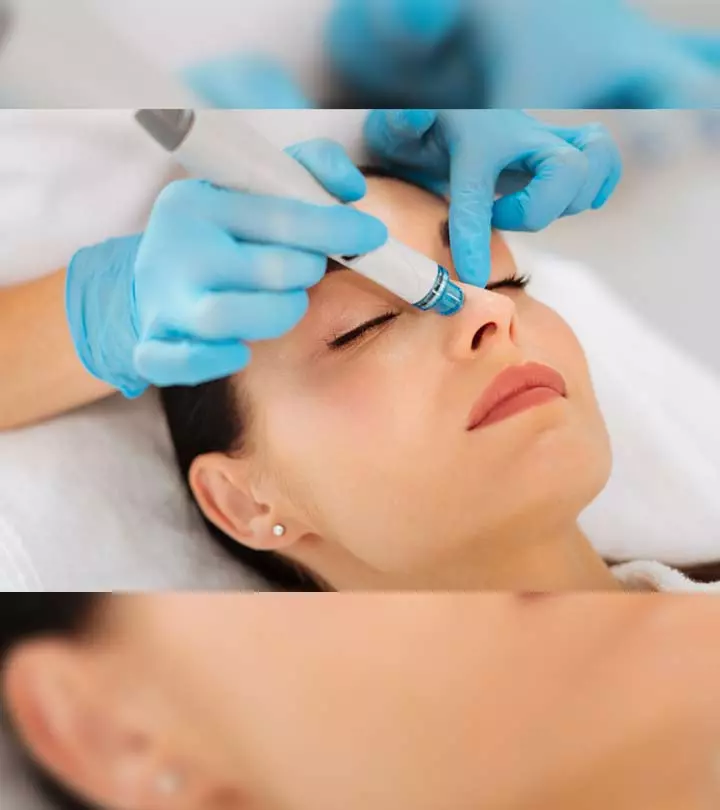

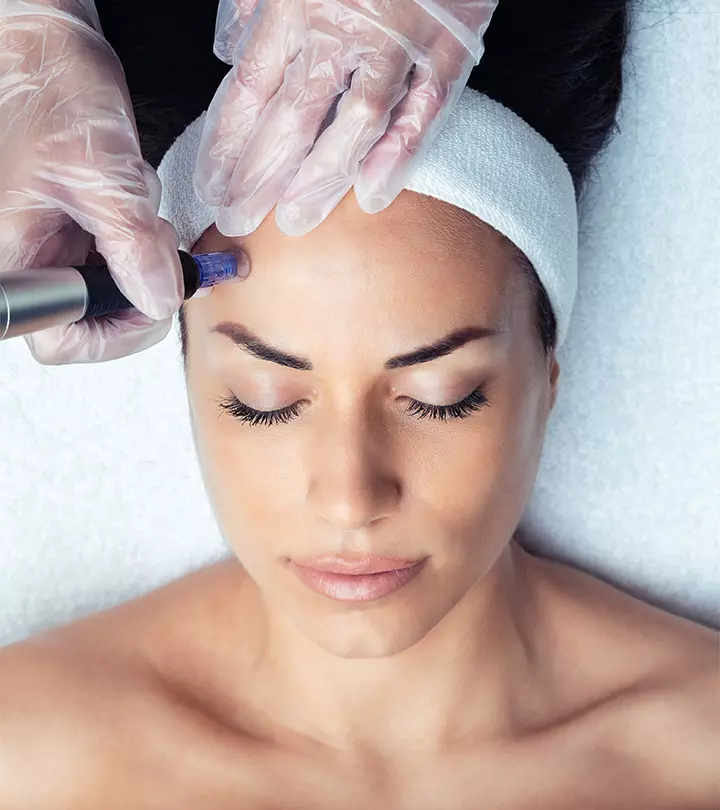
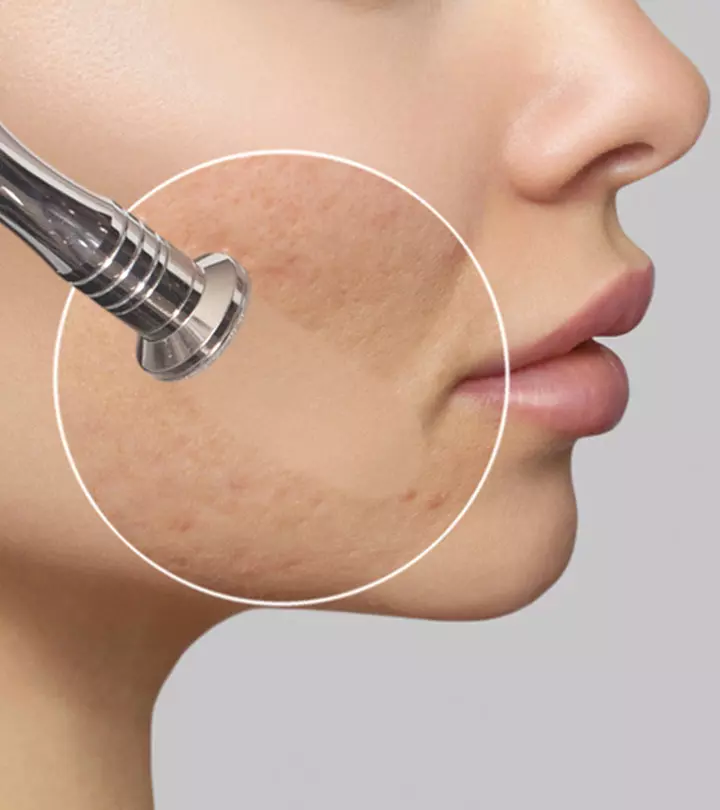
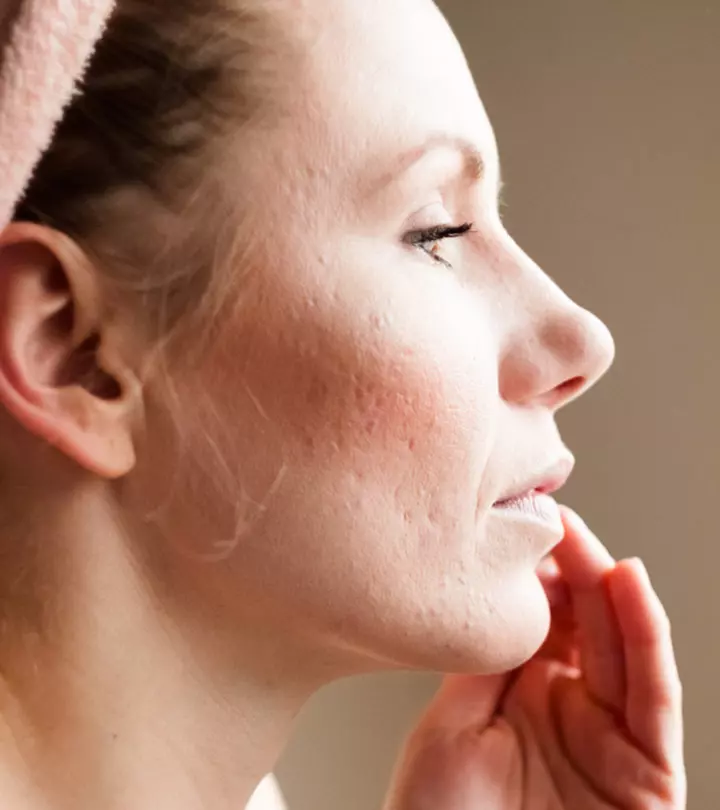
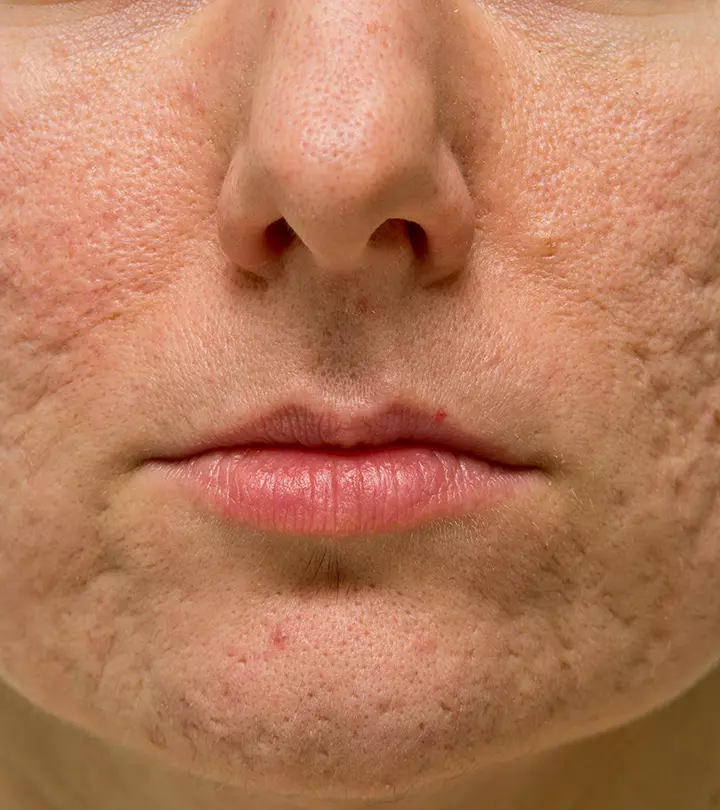





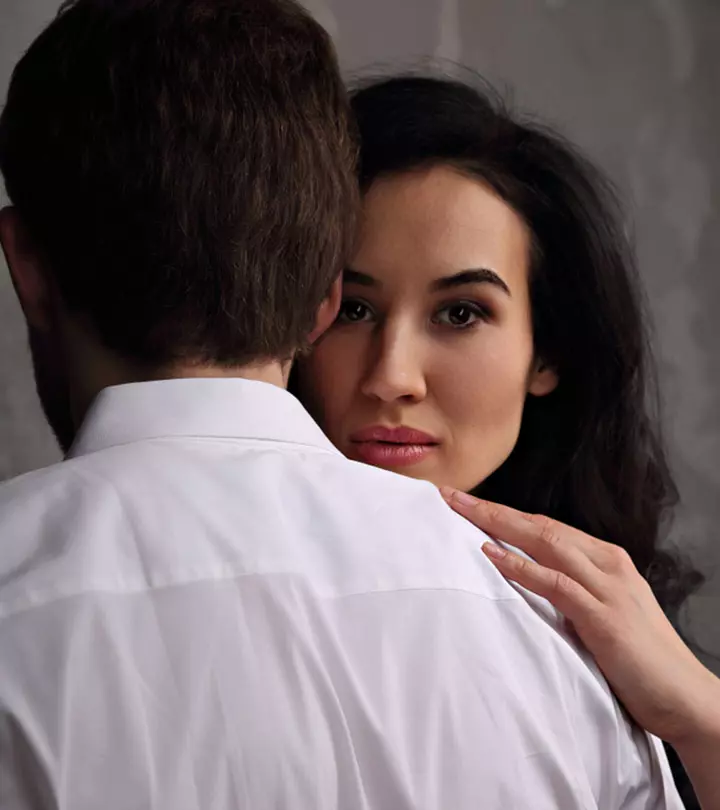





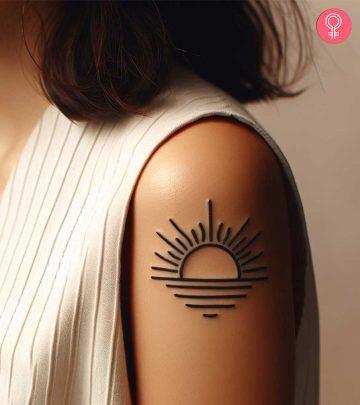

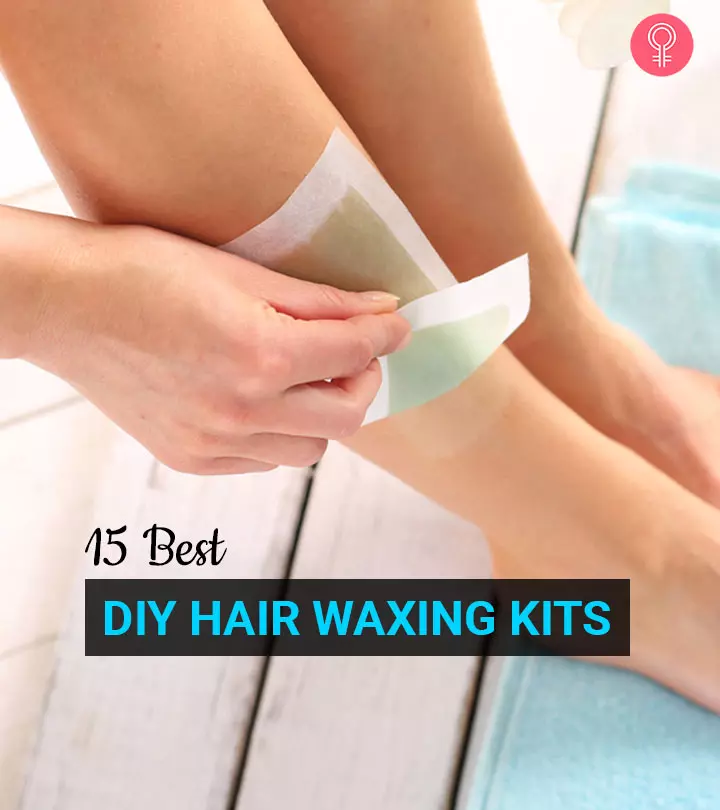

Community Experiences
Join the conversation and become a part of our empowering community! Share your stories, experiences, and insights to connect with other beauty, lifestyle, and health enthusiasts.